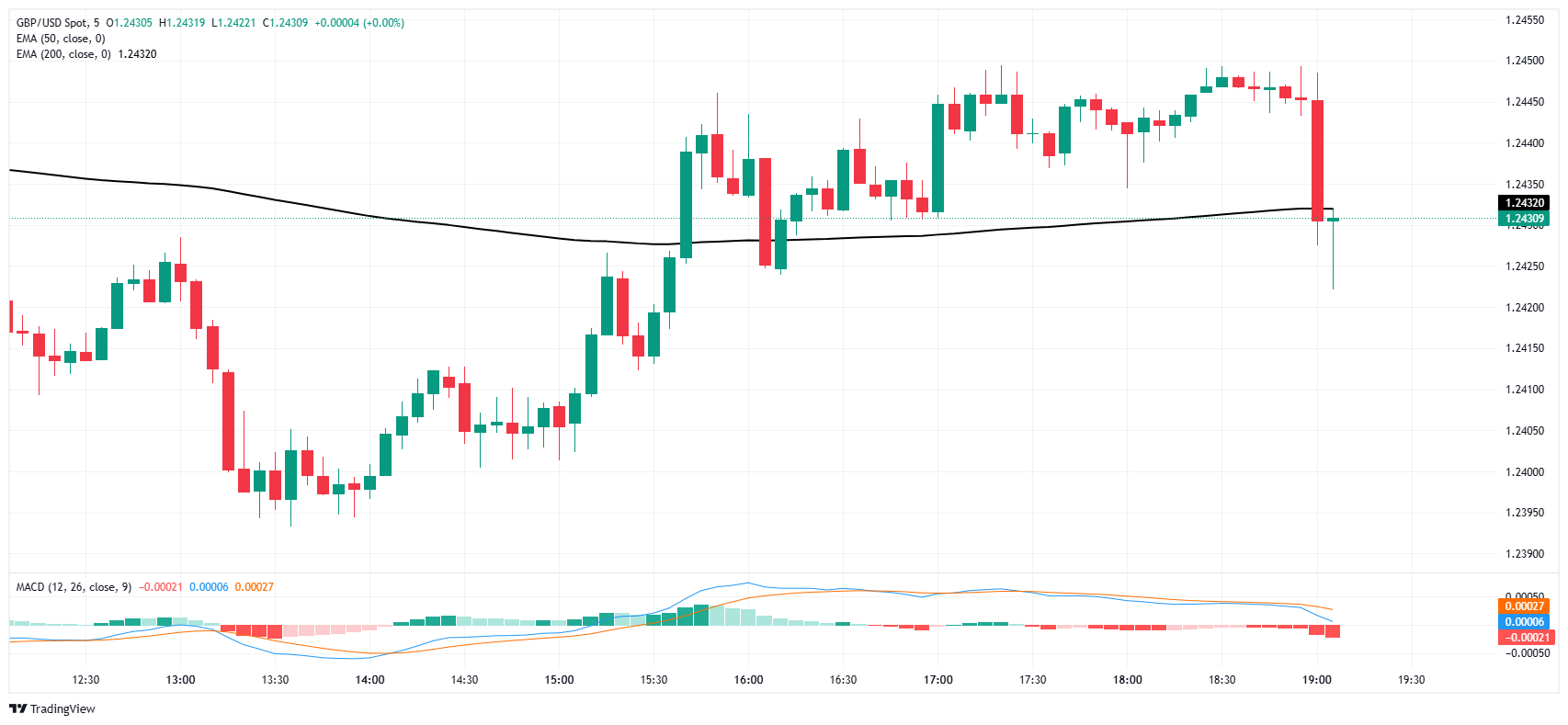GBP/USD churns after Fed holds rates steady, more volatility in the barrel
- GBP/USD rattled, but more impact is still in the pipe.
- Fed held rates steady as rate futures broadly anticipated.
- More details will be due from Fed Chair Powell's press conference.
GBP/USD knocked into some fresh volatility, testing down in intraday chart action and testing below 1.2435 in response to the Federal Reserve's (Fed) recent decision to maintain the interest rate at 4.25%-4.50%. Markets largely expected this hold, and attention will now turn to Fed Chair Jerome Powell's press conference, scheduled for thirty minutes after the Federal Open Market Committee's (FOMC) rate announcement.
Breaking: Federal Reserve left its interest rates unchanged, as anticipated
US President Donald Trump is likely to take to social media during Fed Chair Powell's press conference. He has previously indicated his intention to "demand" rate cuts from the Fed, a stance that challenges the Fed's independence as established by Congress.
More to come...
GBP/USD five-minute chart
Fed FAQs
Monetary policy in the US is shaped by the Federal Reserve (Fed). The Fed has two mandates: to achieve price stability and foster full employment. Its primary tool to achieve these goals is by adjusting interest rates. When prices are rising too quickly and inflation is above the Fed’s 2% target, it raises interest rates, increasing borrowing costs throughout the economy. This results in a stronger US Dollar (USD) as it makes the US a more attractive place for international investors to park their money. When inflation falls below 2% or the Unemployment Rate is too high, the Fed may lower interest rates to encourage borrowing, which weighs on the Greenback.
The Federal Reserve (Fed) holds eight policy meetings a year, where the Federal Open Market Committee (FOMC) assesses economic conditions and makes monetary policy decisions. The FOMC is attended by twelve Fed officials – the seven members of the Board of Governors, the president of the Federal Reserve Bank of New York, and four of the remaining eleven regional Reserve Bank presidents, who serve one-year terms on a rotating basis.
In extreme situations, the Federal Reserve may resort to a policy named Quantitative Easing (QE). QE is the process by which the Fed substantially increases the flow of credit in a stuck financial system. It is a non-standard policy measure used during crises or when inflation is extremely low. It was the Fed’s weapon of choice during the Great Financial Crisis in 2008. It involves the Fed printing more Dollars and using them to buy high grade bonds from financial institutions. QE usually weakens the US Dollar.
Quantitative tightening (QT) is the reverse process of QE, whereby the Federal Reserve stops buying bonds from financial institutions and does not reinvest the principal from the bonds it holds maturing, to purchase new bonds. It is usually positive for the value of the US Dollar.
